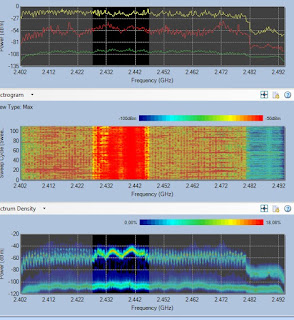Eka-Heka-Hau Eka-Hiney-Ho or: Jussi's Big Adventure
There are times in life when I feel like I've been misunderstood, and I would like to just wish away the communication gap. Unfortunately, there is no Wi-Fi Jambi, so instead I am going to use this short blog post to try to smooth things over with Jussi Kiviniemi, SVP of Ekahau. For those who are unfamiliar, Ekahau is site survey software . You can do predictive surveying (sometimes called "planning") with it and you can do live surveying (the "walking survey") with it. Either way, the result is a nice looking "heat map" showing Wi-Fi coverage over your floorplans, like so: Jussi Kiviniemi is the public face of Ekahau. He's a Finnish guy and he goes to Wi-Fi conferences, hosts events, is active on Twitter , etc. There are days when I think that Jussi doesn't like me. And being the rugged, pro-American American that I am, I take responsibility for things that happen to me. The root of Jussi's occasional distaste for m...

